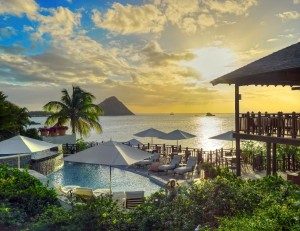
All the beaches in Saint Lucia like in other Caribbean Islands are public. Some beaches have white sand, although because of the volcanic origin of the island some beaches are covered with dark sand.
Most visitors of the island prefer the following beaches: Reduit Beach – about two kilometres of golden-coloured sand, there are bars and facilities for water sports. “Pigeon Island Beach” is on the southern side in front of the entrance to the National Park.
Other popular beaches: Anse Cochon, between Castries and Soufriere, 200 metres of dark sand, best for snorkeling on the reefs, Anse Chastanet, 150 meters of dark silver sand with palm trees, good for diving and snorkeling; Ansedes Pitons beach, located at the base of the Pitons volcanoes with white sand, gorgeous views, a bar and a restaurant, Grand Anse beach is approximately 1.6 km in length and here you can see the birth of turtles, Marigot Bay beach is in the West coast of the island, a small one but very picturesque.
The main attractions of the island are the two extinct volcanoes or volcanic spires, called the Pitons volcanoes. One of them is Gros Piton with a height of 771 meters, the other is Petit Piton with a height of 743 meters. They are connected by Piton Mitan Ridge. The Pitons are located on the southwest coast of the island on Jalousie Bay and they are recognized as a World Heritage site. To see the Pitons, we offer several types of tours: get there on the vessel (yacht, catamaran, motor boat), a hike — climb to the top of a Piton, combo tour to the volcanoes: combining water and hiking.
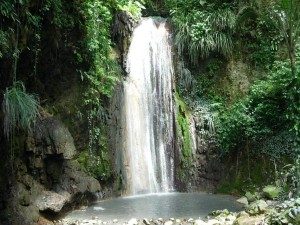
La Soufriere Drive In Volcano or Sulphur Springs will be interesting for people who want to swim in the sulphuric hot water (45C) with mud. They are located near the town Soufriere (from French — “sulphur”). It is the world’s only volcano that can be reached by car.
We highly recommend for extreme lovers to take a Zip Line tour over the gully and ride like Tarzan, almost touching the tops of the trees and moving from one platform to another. An exciting journey on an aerial tram will open to you the pristine beauty of tropical vegetation in the ecologically clean forest.
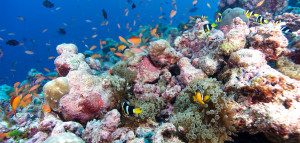 A visit to Pigeon Island will not leave you indifferent. A tour to this island can last for a day and you will visit the picturesque National Park located on 44 acres of the protected area, the historical place of the 18th century — military ruins including Fort Rodney with panoramic views over the North western coast or just relax on the beautiful beach. Pigeon Island was connected to St. Lucia in 1972 and later it was declared a National Historic Landmark.
A visit to Pigeon Island will not leave you indifferent. A tour to this island can last for a day and you will visit the picturesque National Park located on 44 acres of the protected area, the historical place of the 18th century — military ruins including Fort Rodney with panoramic views over the North western coast or just relax on the beautiful beach. Pigeon Island was connected to St. Lucia in 1972 and later it was declared a National Historic Landmark.
Diamond Falls Botanical Garden is situated on 6 acres of beautiful gardens and here you can walk in the shade or swim in the sulfur spring with a waterfall. You will see an abundance of tropical flora and fauna.
A ride on a bike or segway through the picturesque places will be interesting for both children and adults. Hotels and local operators offer water sports: fishing, scuba, diving in special helmets, flyboarding, and kite surfing. Beautiful corals and diversity of the marine vegetation and fish attract divers from all over the world.
Every Thursday there is an organized trip on the Flying Ray yacht from St. Lucia to the French island Martinique.
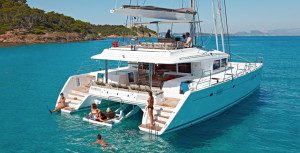
The island is inhabited by about 167 species of birds. It is possible to observe them from different places of the island: Millet Bird Sanctuary, The Des Cartier Rainforest Trail, Vieux Fort Wetlands, Gros Piton Nature Trail.
The carnival in St. Lucia is one of the most important holidays of the year, which takes place annually in July. The Jazz festival is held annually in May on the land of Pigeon Island.
The association of divers conducts the diving festival and both local and international divers attend it.
International Bill Fish tournament is an annual event, which takes place in September. Mango Bowl regatta is in November.
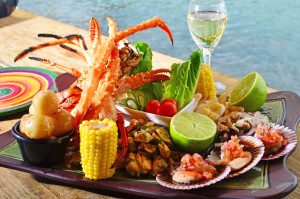 ARC Atlantic Rally for Cruisers organized by the World Cruise Club is the largest Transocean sailing event in the world, more than 200 different boats participates in it. The event starts from welcoming all the participants and then there are entertainment activities, parties, special banquets. It lasts for 2-3 three weeks while crossing the Atlantic Ocean. ARC event is for everyone: families with children, avid sailors and romantic couples, large and small vessels.
ARC Atlantic Rally for Cruisers organized by the World Cruise Club is the largest Transocean sailing event in the world, more than 200 different boats participates in it. The event starts from welcoming all the participants and then there are entertainment activities, parties, special banquets. It lasts for 2-3 three weeks while crossing the Atlantic Ocean. ARC event is for everyone: families with children, avid sailors and romantic couples, large and small vessels.
Nightlife in St. Lucia is daily, for both locals and visitors. There are bars, restaurants, discotheques, casinos in Rodney Bay. On Friday there is local fish fries event to the sounds of the Caribbean rhythms.










 A visit to Pigeon Island will not leave you indifferent. A tour to this island can last for a day and you will visit the picturesque National Park located on 44 acres of the protected area, the historical place of the 18th century — military ruins including Fort Rodney with panoramic views over the North western coast or just relax on the beautiful beach. Pigeon Island was connected to St. Lucia in 1972 and later it was declared a National Historic Landmark.
A visit to Pigeon Island will not leave you indifferent. A tour to this island can last for a day and you will visit the picturesque National Park located on 44 acres of the protected area, the historical place of the 18th century — military ruins including Fort Rodney with panoramic views over the North western coast or just relax on the beautiful beach. Pigeon Island was connected to St. Lucia in 1972 and later it was declared a National Historic Landmark.
 ARC Atlantic Rally for Cruisers organized by the World Cruise Club is the largest Transocean sailing event in the world, more than 200 different boats participates in it. The event starts from welcoming all the participants and then there are entertainment activities, parties, special banquets. It lasts for 2-3 three weeks while crossing the Atlantic Ocean. ARC event is for everyone: families with children, avid sailors and romantic couples, large and small vessels.
ARC Atlantic Rally for Cruisers organized by the World Cruise Club is the largest Transocean sailing event in the world, more than 200 different boats participates in it. The event starts from welcoming all the participants and then there are entertainment activities, parties, special banquets. It lasts for 2-3 three weeks while crossing the Atlantic Ocean. ARC event is for everyone: families with children, avid sailors and romantic couples, large and small vessels.